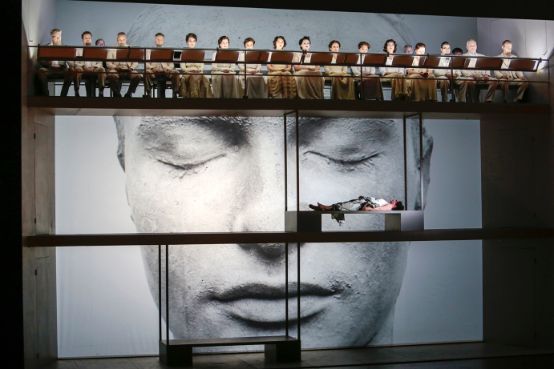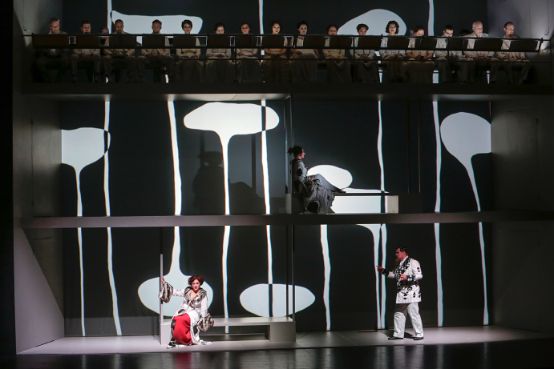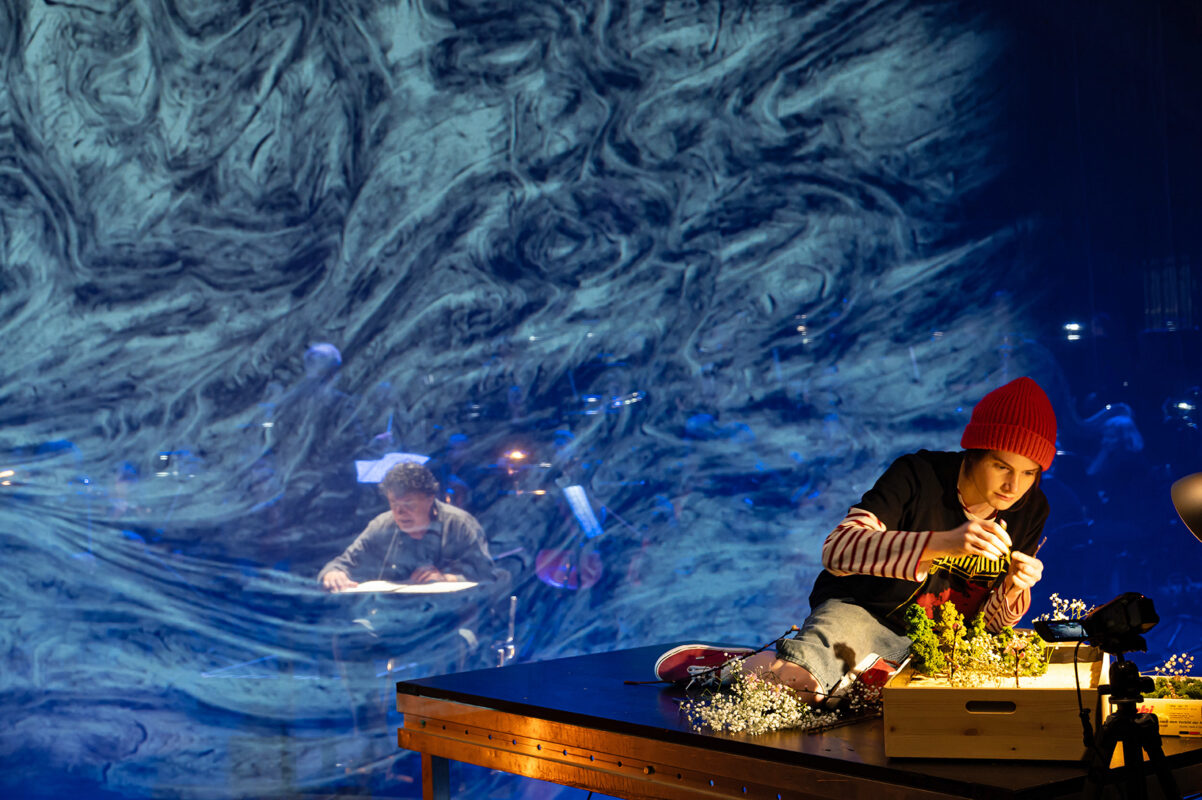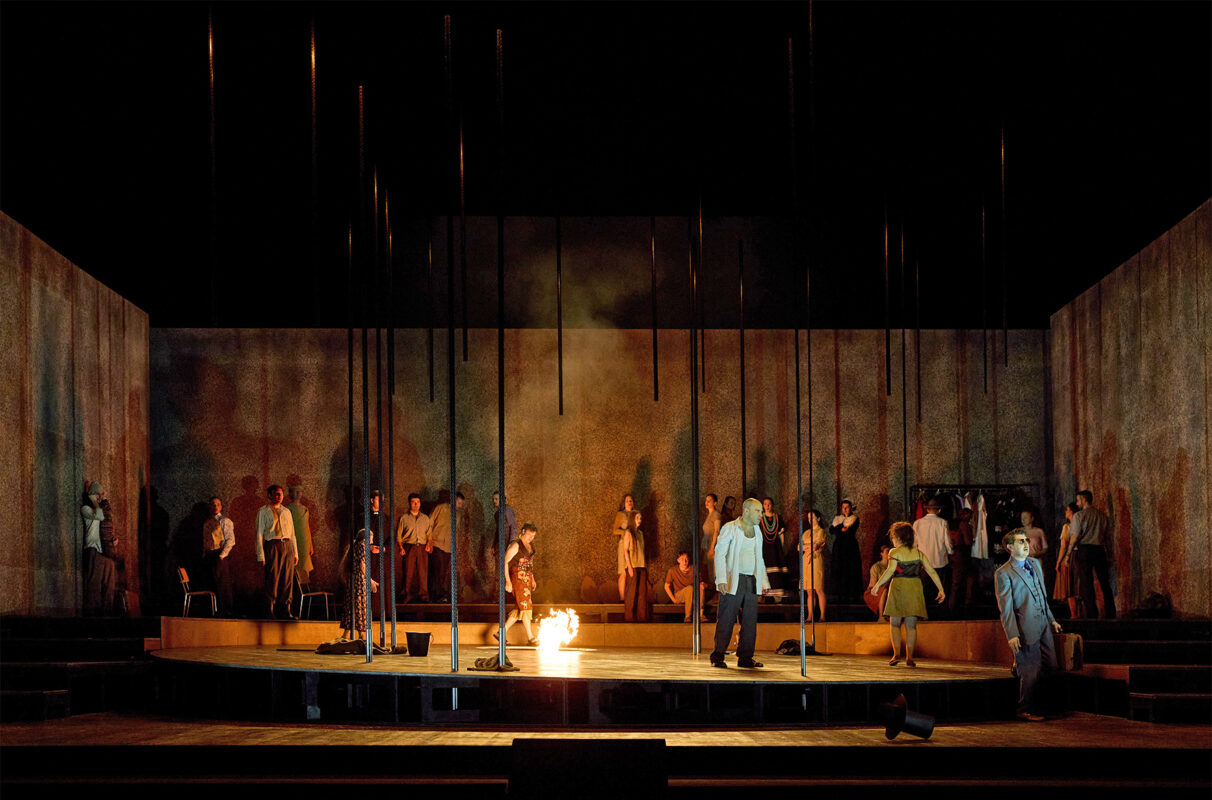Murder of a diva
The Theater St. Gallen has been showing David Philip Hefti's first opera "Anna's Mask" since May 6. The music and staging are a distanced take on the dramatic subject matter.

A great opera story that is itself about opera and is based on true events (and rumors): On June 29, 1910, the conductor Dr. Aloys Obrist shot his former lover Anna Sutter and then himself in her apartment at Schubartstrasse 8 in Stuttgart. That morning, the singer had just been intimate with her new lover, the bass-baritone Albin Swoboda, when Obrist paid her a surprise visit. Swoboda hid in a cupboard. After Sutter had once again denied Obrist's protestations of love, the shots were fired. The case caused a sensation, as Sutter was the celebrated star of the Stuttgart Opera, for example as the Merry Widow, Salome and Carmen. And so the Swabian chronicle: "Frln. Sutter is lying in bed, her right arm spread wide and her left arm, which was wounded by the bullets, bent together. As in Carmenher leading role, she lay there." Ten thousand people attended the funeral, and Karl Donndorf's Fountain of Destiny in the palace gardens still commemorates the incident today. It was never forgotten in Stuttgart.
In 2001 there was an exhibition there; in the same year the novella Anna's mask from Alain Claude Sulzerand the opera of the same name by the St. Gallen-born composer is now also based on it David Philip Hefti. As Anna Sutter herself came from Wil, this new piece has, to a certain extent, double birthright in Wil. St. Gallen, where it was premiered on May 6 (further performances until June 3). Sulzer's libretto recounts the events leading up to the crime, Obrist's importunities, his dismissal from the theater, Sutter's flirtations and finally the crime itself - all in ten scenes, surrounded by a prologue and epilogue. The fact that Sutter's maid Pauline and police inspector Heid subsequently became a couple forms the framework.
Clever tonal structure
Hefti's first opera, as he emphasizes, had to cover three times as much musical time as ever in a single composition; and he has done so skilfully, entertainingly and clearly. His music sounds transparent, is not hectic and does not waste its powder too early; on the contrary, it develops continuously over the ninety minutes towards the haunting conclusion. There is an instrumental epilogue that builds up once again, a "music of destiny", as Hefti calls it. This demonstrates his wealth of experience in dealing with the orchestral apparatus. Under the direction of Otto Tausk, the St. Gallen Symphony Orchestra once again intensifies its performance.
What Hefti does in the orchestra pit and how he uses the small choir not to act, but to reinforce the action as a static commentator, gives the piece a strong effect. He also skillfully uses the percussion elements to create moods, but also as a continuo for the singing. In the program booklet, Hefti explains how he grew more and more into the genre during his compositional work. "I think you can see that in the opera. The first part consists of large scenes in which the words carry a lot of weight and the plot is prepared. From about halfway through, the music is given more space, the sounds are allowed to expand and breathe."
Lack of vocal power
This is the strength of the new piece, but at the same time it also points to its weaknesses. The vocals, the singing/declaiming, the recitar cantando, which should lead to an emotional tension from the language, remain too uncharacteristic. In this respect, the opera seems comparatively flat. One does take notice when Obrist (Daniel Brenna) soars into almost Puccini-like and kitschy cantilenas, one notices when a Carmen-But this seems too conceived, not penetrated and experienced. As clear and singable as the language is, too little happens beyond that. Maria Riccarda Wesseling is convincing as Anna Sutter, but I would have liked her to have a little more diva-like quality in her voice, for example. Ultimately, the piece remains too realistic or perhaps even too honest for long stretches, not sufficiently developing the conflicts, the creepy as well as the pathetic. Overall, it comes across as too dignified and sober (also in terms of the libretto), as if it doesn't want to touch on the essentials. A directorial trick copied from Thornton Wilder - not using props (such as flowers) but only hinting at them - points to this shortcoming. The multi-storey stage designed by director Mirella Weingarten appears cool in its geometry, but does not condense the situation - and the voices come across as similarly distant. This opera thus misses out on the operatic quality, the overwhelming "powerhouse of emotions" (Alexander Kluge) that the material so obviously contains.
-

- Photo: Iko Freese (Theater St. Gallen)
- Maria Riccarda Wesseling, Beate Vollack, Daniel Brenna








